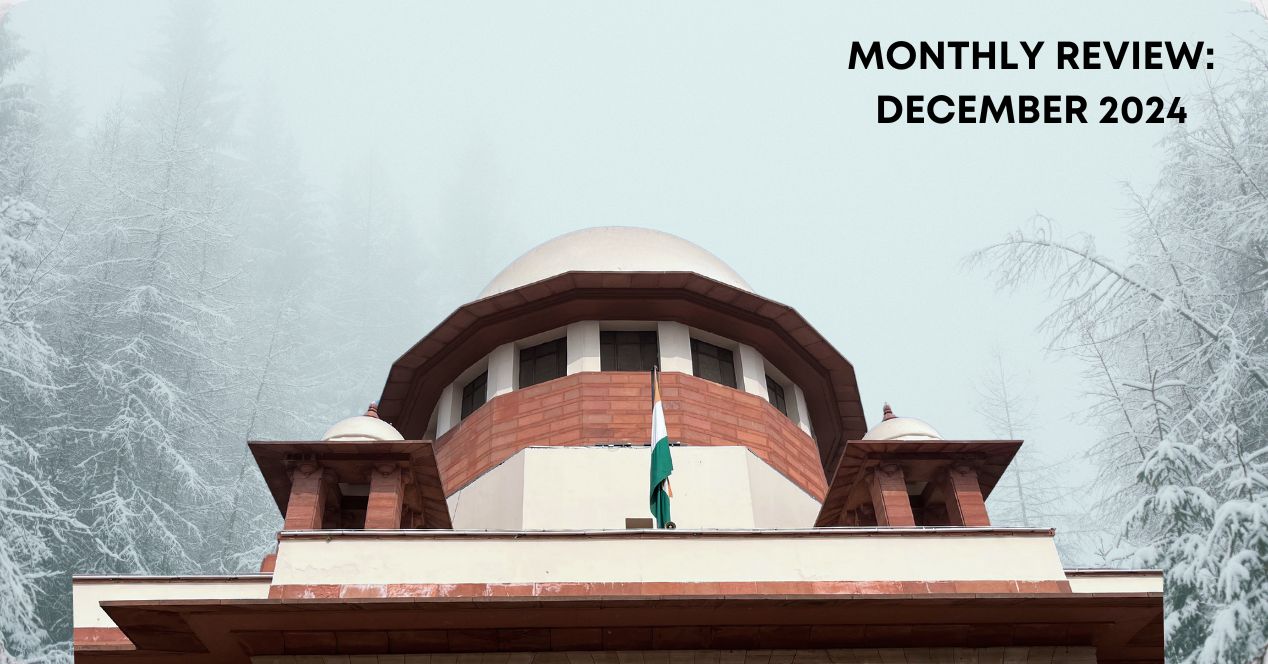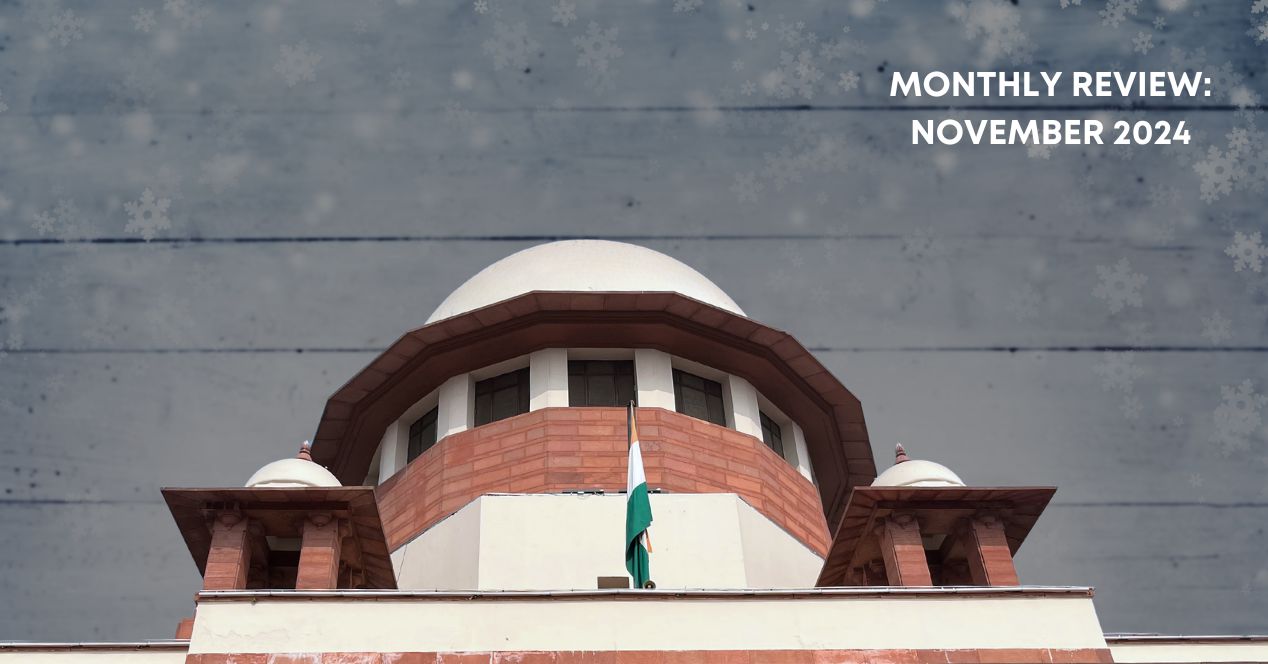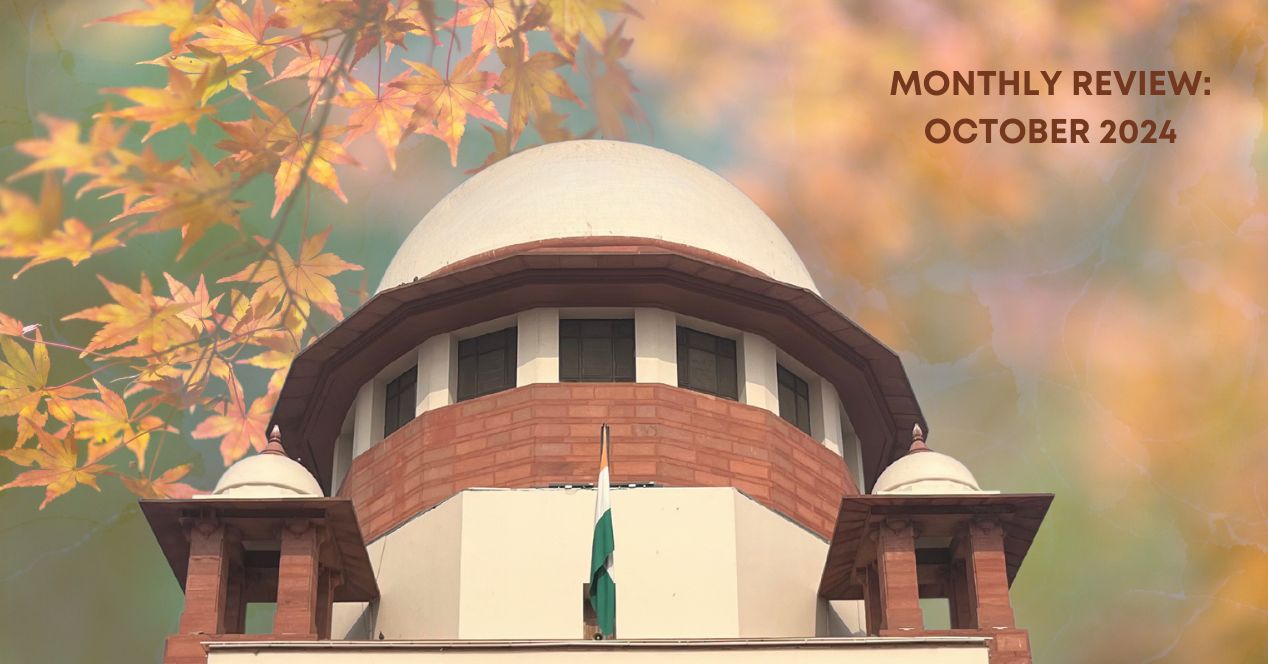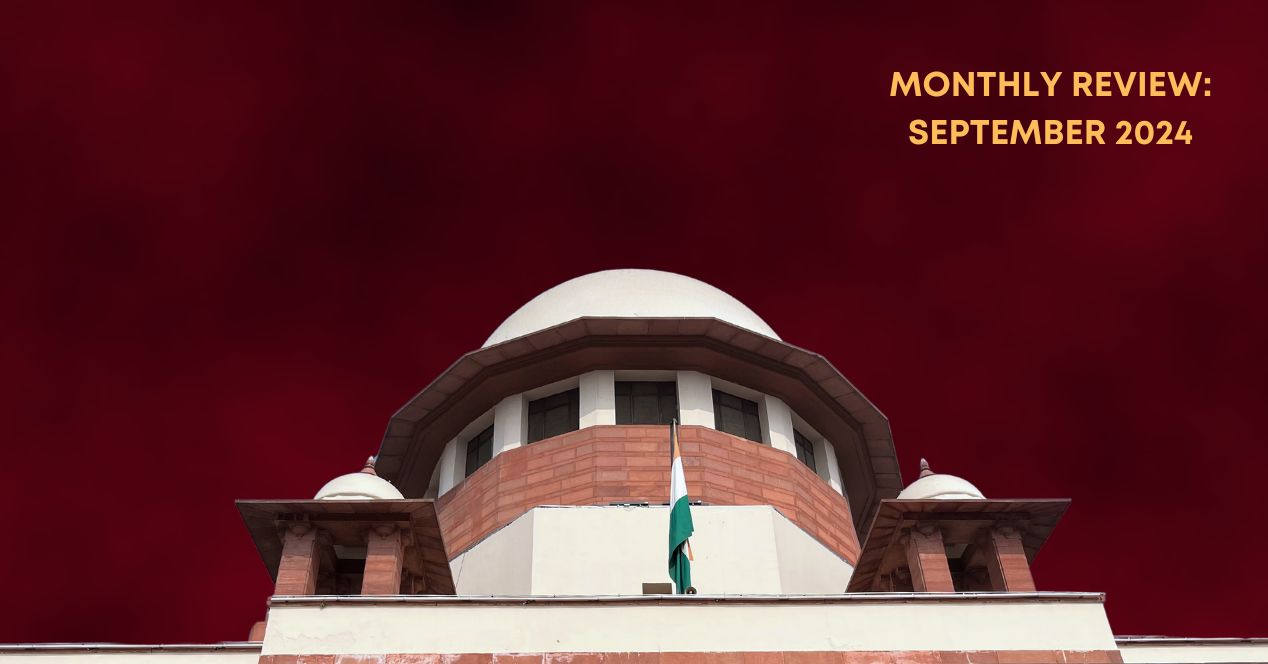Analysis
Monthly Review: January 2025
In a month where the Court celebrated the completion of 75 years, a juvenile justice case and a split verdict also made headlines
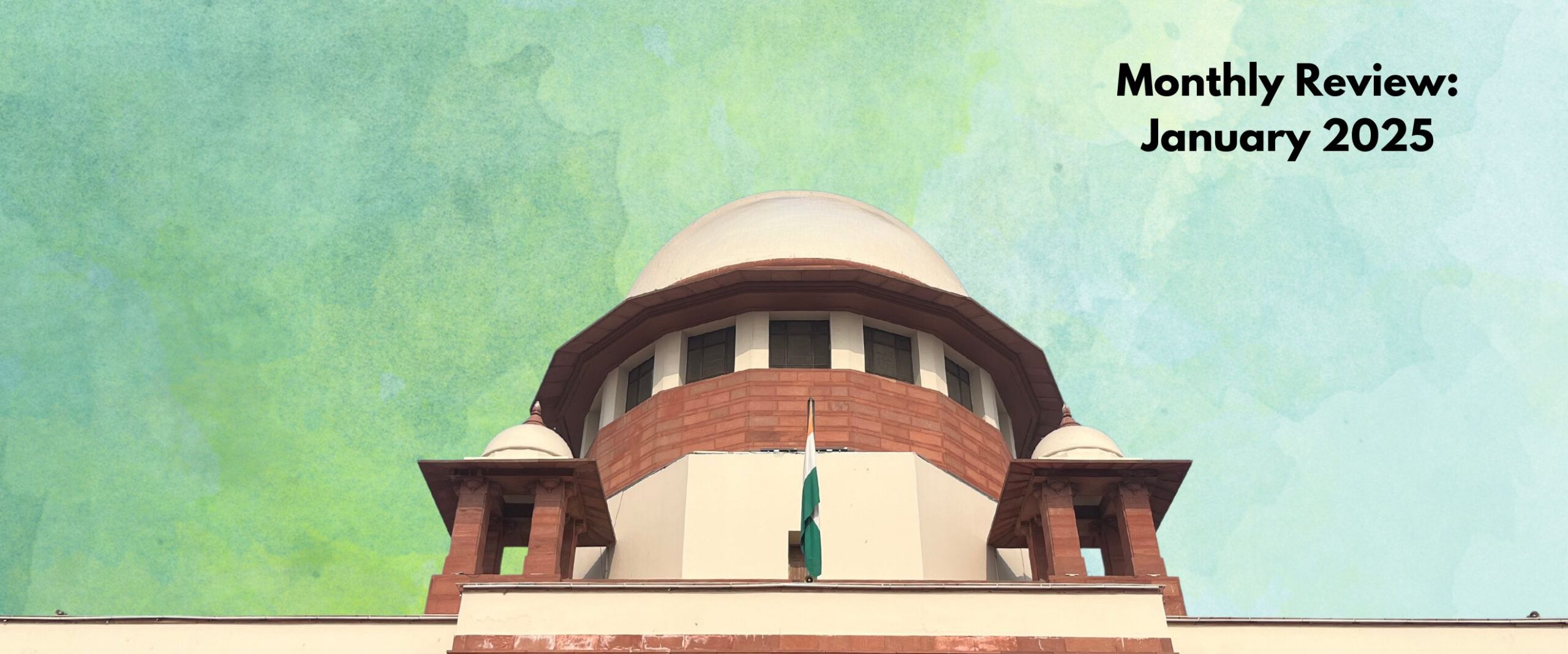
In January, even as we witnessed the top court commemorating 75 years of its existence and commitment to delivering justice, certain decisions served to highlight the shortcomings of the country’s judicial system. We bring you a roundup of everything that transpired in January 2025 at the top court.
This month, the Court not only disposed of matters relating to bail and juvenile justice but also decided on cases which underlined systemic social inequities. It also continued monitoring the pollution situation in the National Capital Region. January also saw the retirement of Justices C.T. Ravikumar and Hrishikesh Roy and the elevation of Justice K. Vinod Chandran, both native to Kerala.
Correcting a grave error
On 8 January, in Om Prakash v State of Uttarakhand, a bench of Justices M.M. Sundresh and Aravind Kumar set aside a life sentence on the ground that the appellant was a juvenile when he committed the crime. In 2012, a Presidential Order had commuted the earlier death sentence to life imprisonment.
The appellant’s claim of juvenility had been earlier rejected in the subordinate courts and the Supreme Court. Despite presenting evidence such as school certificates and ossification tests which indicated his age to be 14 at the time of offence, he had not been tried under the juvenile laws. The trial court relied upon the appellant’s statement regarding a bank account to consider him a major and sentenced him to death, overwhelmed by the nature of the crime. The reliance was upheld in subsequent court verdicts. The judgement against which the appeal arose noted that the proceedings had attained finality.
The judgement, authored by Justice Sundresh, affirmed that juvenile laws are applicable retrospectively, prioritising rehabilitation over punishment. The Court endorsed an expansive interpretation of Section 9(2) of the Juvenile Justice Act, 2015 allowing juvenility claims to be raised at “any” stage of litigation. “We place emphasis on the words ‘even after the final disposal of the case’ in Section 9(2) of the 2015 Act. As stated, this provision being the heart and soul of the entire Act, must be given its fullest meaning and interpretation,” the judgement noted.
The bench criticised the attitude of the courts which had previously heard the case. “The approach of the Courts in the earlier round of litigation cannot be sustained in the eye of law… We would only state that this is a case where the appellant has been suffering due to the error committed by the Courts,” the judgement read. The appellant had already been incarcerated for more than 25 years when he was freed.
This case serves as a precedent for reopening past cases where claims of juvenility are rejected due to procedural technicalities rather than substantive proof.
A watchdog against pollution
Following from where it left off last year, the Court continued hearing the Delhi pollution matter under the continuing mandamus in MC Mehta v Union of India (1985). In this matter, the Court has been developing long-term solutions to address the capital’s pollution crisis.
In the latest hearing on 27 January, a bench of Justices Abhay S. Oka and Ujjal Bhuyan passed orders in matters concerning the closure of power plants, colour-coded stickers on vehicles and solid waste management in the NCR.
Noting the non-compliance of norms prescribed in the Environment Protection Rules, 1986, Justice Oka instructed the Union to classify the 11 thermal plants in Delhi as “retiring” or “non-retiring”. The judge also directed the Commission for Air Quality Management (CAQM) to consult with the Ministry of Power and the Ministry of Environment and Forests and then submit interim norms to be followed by the power plants until new deadlines are put in place.
On the issue of colour-coded stickers, the bench modified an order from 13 August 2018, which had mandated that all vehicles in the NCR must display a coloured sticker on their windshields indicating the type of fuel used. Light blue stickers were required for petrol/CNG vehicles and orange for diesel vehicles. The modified order extends the mandate to vehicles purchased even after the original threshold of 2 October 2018.
The modified order mandates penalties under Section 192 of the Motor Vehicles Act, 1988, for non-compliance with the August 2018 directive, including up to one year of imprisonment and fines of ₹10,000, applicable across all NCR states. NCR states were instructed to submit affidavits on compliance for vehicles purchased before 1 April 2019 within a month. Additionally, the order restricted ownership transfers, address changes, and duplicate registration for non-compliant vehicles, while denying Pollution Under Control (PUC) certificates to those failing to meet the requirements. In two separate hearings earlier this month, the Court had deliberated passing such an order.
Finally while dealing with solid waste management, the Court emphasised the strict enforcement of Rule 4 of the Solid Waste Management Rules, 2016. The rule requires bulk waste generators to segregate and manage their waste independently. Noting poor compliance in Delhi, with only 750 of 2923 bulk waste generators identified, the bench directed the formation of teams for enforcement and public awareness. It further warned of drastic measures, including halting construction activities in Delhi, if the rules were not implemented and stated that violations would attract penalties under Section 15 of the Environment Protection Act, 1986.
The matter will next be heard on 21 March 2025.
Divided in death
On 27 January, a bench of Justices B.V. Nagarathna and Satish Chandra Sharma gave a split verdict regarding the burial of Ramesh Baghel’s father in Chhindwada, Chhattisgarh. The Baghel family is from a community that converted to Christianity. The judgement states that the majority population in the village are “Hindu tribals”.
Justice Nagarathna criticized the village panchayat for failing to provide a burial ground for the Christian community, highlighting the High Court’s failure to address the appellant’s predicament. In her view, this denial was a violation of Articles 14 and 15, and undermining the constitutional spirit of secularism and fraternity. She quoted Justice O. Chinnappa Reddy’s judgement in Bijoe Emmanuel (the ‘national anthem case’): “Our tradition teaches tolerance, our Constitution teaches tolerance, let us not dilute it.”
Contrastingly, Justice Sharma held that as per the Chhattisgarh Panchayat rules, burial can only be permitted in designated places. A person cannot claim a blanket right to bury the body at a place of their choice. During the hearings, Senior Advocate Colin Gonsalves had cautioned that directing the burial of a deceased in a different place could set a dangerous precedent where Dalit individuals, if converted, may be denied the right to bury their loved ones in their own village.
Justice Nagarathna opined that Baghel should be allowed to bury his father on his private agricultural land, while Justice S.C. Sharma ruled that the burial should take place at a designated Christian burial ground located 20-25 kilometers away.
Typically, in the case of a split verdict, the matter would be referred to a larger bench to ensure a final decision. However, in this instance, the Bench chose not to refer the case to a larger bench on the ground that the body was in storage since early January and the situation demanded expedient action. Instead, the operative part of the order upheld Justice Sharma’s solution and directed the burial to take place at a Christian burial ground in Karkapal with logistical support from the state.
Deliberating bail
On January 22, a bench of Justices Pankaj Mithal and Ahsanuddin Amanullah delivered a split verdict regarding former Aam Aadmi Party councillor Tahir Hussain’s petition seeking interim bail to campaign for the Delhi Assembly elections. The special leave petition challenged a Delhi High Court order which refused him interim bail and only granted custody parole to file his nomination from the Mustafabad constituency. Tahir Hussain is a key accused in the 2020 Northeast Delhi riots case and faces serious charges, including for the murder of an Intelligence Bureau staffer, Ankit Sharma.
Justice Mithal reasoned that granting interim bail for elections could open a “Pandora’s box” with respect to other undertrials and could potentially lead to witness tampering. Justice Amanullah, however, allowed the interim bail until 4 February 2025, citing Hussain’s five years of custody and the existing precedents. During the course of hearing, Justice Amanullah also criticised the delay in the trial, noting only five witnesses had been examined since June 2020. In view of the divergence, the case was referred to the Chief Justice of India to allocate the matter to a larger bench.
Subsequently, a three-judge bench comprising Justices Vikram Nath, Sanjay Karol, and Sandeep Mehta granted custody parole to Hussain on 28 January 2025. The parole, lasting from 29 January to 3 February allows Hussain to be released for 12 hours daily for canvassing. According to the directions, Hussain must not visit his home and will bear all expenses of his parole, including for the police escort. The Court clarified that this decision is specific to Hussain’s case and should not be treated as a precedent. Further, the Court noted that Hussain’s pending bail application will be decided by the High Court on its own merits.
In a separate development, the Union Government, by way of an affidavit, informed the Supreme Court that there is no plan to introduce a standalone Bail Act. In Satender Kumar Antil v Central Bureau of Investigation (2022), the top court had recommended the Union Government bring in legislation to streamline the grant of bail. Last year, the Court had asked the Union to inform if a separate bail law was under contemplation. In response to its queries, the Union stated that no such law was deliberated. The Union’s affidavit stated that the Bhartiya Nagarik Suraksha Sanhita, effective from 1 July 2024, covers bail provisions in Chapter XXXV.
No room for review
On 9 January, the Court dismissed the review petitions filed against its October 2023 verdict in Supriyo v Union of India, which had refused to recognize queer marriages. A bench comprising Justices B.R. Gavai, Surya Kant, Nagarathna, P.S. Narasimha, and Dipankar Datta reviewed the petitions in chamber, concluding that there was no apparent error in the earlier judgment.
In Supriyo, the Court had stated that the issue of recognising queer marriages should be decided by the legislature, even as it acknowledged the discrimination faced by queer couples and affirmed their right to cohabit without fear of violence or coercion. The review petitioners had argued that the judgment neglected to grant legal protection to queer couples despite recognising the discrimination they face. According to them, the Court had “abdicated” its duty to uphold and protect fundamental rights.
Jail for talaq?
On 29 January, a bench comprising Chief Justice Sanjiv Khanna and Justice P.V. Sanjay Kumar directed the Union government to provide data on the number of cases filed and FIRs registered under the Muslim Women (Protection of Rights on Marriage) Act, 2019 (MWA). The direction came in a plea challenging the constitutionality of the Act, which criminalises triple talaq, classifying it as a non-bailable and cognisable offence. The law was enacted by Parliament after the Court’s decision in Shayara Bano (2017), which declared triple talaq unconstitutional.
The petitioners argued that the MWA discriminates against Muslim men by treating triple talaq as a criminal offence while considering similar acts, such as abandonment or desertion, under other personal laws as civil. When Solicitor General Tushar Mehta began highlighting the injustice of triple talaq, CJI Khanna was quick to clarify that the petitioners were only challenging its criminalisation. The Chief also suggested that the cause title of the case will be revised, with the new title likely being Re: Constitutionality of the Muslim Women (Protection of Rights on Marriage) Act, 2019.
The case is scheduled to be heard on 17 March 2025.
Doctors? Present!
On 29 January, a bench of CJI Khanna and Justice Kumar briefly heard the suo moto petition on the R.G. Kar case. This was the first time the top court heard the case since the accused Sanjay Roy was sentenced for life by a Sessions Court in Sealdah on 20 January.
A counsel for resident doctors submitted that the All India Institute of Medical Sciences had marked several protesting doctors as absent. This was contrary to an order issued by the Court on 22 August 2024, which prohibited coercive action against doctors returning to work. The bench clarified that doctors returning to work would not be considered absent.
The hearing is part of ongoing proceedings that will continue in March 2025.
Caste bars behind bars
On 27 January 2025, a bench of Justices J.B. Pardiwala and R. Mahadevan gave a firm warning to Union and state governments to submit compliance reports on the steps taken by them to address caste, gender and disability-based discrimination in Indian prisons. The observation came in a suo moto case titled Re: Discrimination inside prisons in India.
Senior Advocate S. Muralidhar and Advocate Disha Wadekar, representing journalist Sukanya Shantha, an intervenor, informed the bench that the compliance reports had not been submitted despite the expiry of the three-month deadline. They also pointed out that the joint status report from the National Legal Services Authority (NALSA), which the Court had previously directed, had also not been filed. The bench gave “one last opportunity” to the Union and state governments to submit the compliance reports within the next two weeks. It also directed NALSA to file its joint status report by the next hearing.
Journalist Sukanya Shantha’s 2020 report, supported by the Pulitzer Centre, had uncovered caste-based discrimination in Indian prisons. In 2023, she filed a writ petition against discriminatory prison rules and the labeling of Denotified and Nomadic Tribe (DNT) communities as “habitual offenders.”
On 3 October 2024, a three judge bench of the Supreme Court ruled that such practices were violative of fundamental rights and ordered the Union and state governments to revise prison manuals to remove caste-based provisions. The Court also took a suo moto cognisance of discrimination in prisons under the present cause title
The case will be next heard on 18 February 2025.
Helping hands
On 30 January, a Special Bench of CJI Khanna and Justices Gavai and Kant directed that high courts could appoint two to five ad-hoc judges under Article 224A. The provision allows retired high court judges to resume duties at their high courts. The bench also directed that ad-hoc judges cannot be more than 10% of the sanctioned strength of the high court.
In the process the bench also put in abeyance part of its judgement in Lok Prahari v Union of India (2021). Lok Prahari held that ad-hoc judges could only be appointed if the high court vacancies exceeded 20% of the sanctioned strength. The CJI Khanna-led bench observed that over 62 lakh cases were pending across high courts in India. The appointment of ad-hoc judges, as also observed in Lok Prahari, would facilitate the clearance of cases pending for more than five years.
The Court also suspended the provision in its April 2021 judgment that allowed division benches comprising only ad-hoc judges. It reaffirmed that the existing Memorandum of Procedure would govern these appointments.
And Kerala’s back on the bench
In the wake of Justice C.T. Ravikumar’s retirement on 5 January, the Court appointed a new judge from Kerala. Justice Ravikumar authored 99 judgements during his tenure of 3.25 years.
On 7 January, the Collegium led by Chief Justice Sanjiv Khanna, recommended Justice K.V. Chandran for elevation. The Collegium resolution noted that, while making the recommendation, it “had taken into consideration the fact that there is no representation on the Bench of the Supreme Court from the High Court of Kerala.” The resolution also observed that Justice Chandran was the senior-most judge in the Kerala High Court and ranked 13 in the all-India seniority list of High Court judges.
The Collegium’s recommendation was notified by the Union on 13 January and Justice Chandran assumed office on 16 January. He will retire in April 2028 after a 3.25 year long tenure. He is the 16th judge from Kerala to be elevated to the top court.
A judge with a funny-bone
Last month also saw the retirement of Justice Hrishikesh Roy. He was the fifth seniormost judge at the time of his retirement. He authored 46 judgements and was a part of 326 benches during his five year long tenure.
He was known for his wit, humour and popular culture references in the Courtroom and his judgements. In our notable judgements, we listed some of his judicial opinions which stood out for promoting party autonomy in arbitration and suo moto powers of the National Green Tribunal.
Ajitesh is an intern at the Supreme Court Observer for the month of January 2025.

